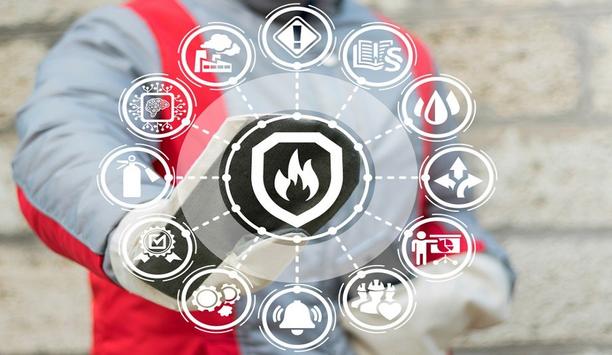The fire and security industry as we all understand it today is due for a much-needed paradigm shift. The solutions that security dealers and integrators are installing and deploying today have advanced considerably and for many, those systems do an excellent job safeguarding the homes and small businesses of their customers. However, all of those installed solutions have one inherent flaw: traditional fire alarms and security systems are only reactive in nature.
By reactive, we mean that although today’s fire alarm and security systems are excellent at informing customers of a harmful or damaging event, such as a fire or perhaps a flood that is in progress, they are very poor at predicting when trouble is about to strike.Knowing that a flood is taking place within a small business or a home is an incredibly valuable piece of information
Analytics Predict Damaging Or Fatal Events
Knowledge that an event such as a flood is currently taking place within a small business or a home is an incredibly powerful and valuable piece of information. In the case of flooding, the ability to detect and shut off a water leak within the first 30 minutes is capable of reducing damage costs by up to 90 percent. However, imagine if, for example, you were alerted of a drop in a building’s temperature coupled with a low outdoor wind chill before a pipe burst and caused a flood?
You would then be able to investigate the issue and take measures to stop the flood from occurring. Today’s technology advancements make this possible and are why the security industry should be shifting from reactive to preventative security solutions for their customers. Predictive analytics is the use of data, statistical analysis, and machine learning techniques to identify the probability of future outcomes
Systems that can predict damaging or fatal events — such as carbon monoxide build-up, mould damage or flooding and even fires — may sound like science fiction but they exist and they are possible today through the power of predictive analytics. Put simply, predictive analytics is the use of data, statistical analysis, and machine learning techniques to identify the probability of future outcomes based on historical data.
To better understand the current state of the security industry and where it needs to evolve, we need to break down how predictive analytics play into that shift in layman security dealer and integrator terms.
 |
| A system using predictive analytics can alert a building manager, property owner or other professional to the change in status that might indicate a future fire |
Dangers Of Binary Data Messengers
Systems that can predict damaging or fatal events may sound like science fiction but they exist and they are possible today In their most basic form, many of the standard devices and solutions security dealers install every day are “binary” data messengers. A door/window sensor, for example, understands two data points — “open” and “closed” — and communicates that status to the overall system, which may ignore the message unless the system is armed.
While a smoke/CO detector may appear to be a more complicated example, within fire alarm and security systems it behaves in the same way the door/window sensor example does by communicating “smoke/CO detected” or “no smoke/CO detected” back to the overall system.
In our current industry state, systems monitor for dichotomies: open/closed, locked/unlocked, motion/stillness, smoke or CO detected/no smoke or CO detected, and water/no water detected. While the ability to detect these status changes is important, monitoring for a change in two data points is the current limitation of today’s fire alarm and security systems, and the reason why we need the additional layer of predictive analytics to move the industry forward. A single PIR motion sensor may also be capable of measuring sound, lux levels, temperature, and humidity
Rather than relying on a system consisting of binary data messengers that only communicate two data points, a better solution is a system of data collectors and messengers that can constantly measure an environment, store that information and establish baselines and patterns.
The ability for a system featuring predictive analytics to identify the likelihood of future outcome (i.e., potential flood or fire) relies on that system’s ability to supply historical data from multiple sources. As common sensors that security dealers install regularly continue to advance, standalone devices are getting better at measuring several data points.
For example, a single PIR motion sensor may also be capable of measuring sound, lux levels, temperature, and humidity, making that single sensor a very data-rich device that can then process and provide more useful information.
 |
| Many dealers are already familiar with the concept of predictive analytics and understand the benefit it can provide to an installation |
Anticipating Future Incidents
With predictive analytics, the more data points the algorithm has access to, the more sophisticated the system becomes, and the better it is at predicting future outcomes. By learning what’s “normal” within an installed environment via the data provided by the wireless sensors that connect to the system, cloud-based predictive analytics engines can understand when critical environmental factors and patterns are out of their traditional threshold.Understanding predictive analytics can help security dealers and integrators prevent damage to their client’s businesses or homes
The system can then alert a building manager, property owner or other professional to the change in status that might indicate a future fire, flood, or CO leak. For example, in UL research testing with smouldering fires, one such system accurately anticipated and warned users of a fire 18 minutes before any smoke alarms sounded.
Understanding predictive analytics and familiarity with the in-market solutions that leverage that emerging technology can help security dealers and integrators prevent damage to their client’s businesses or homes via preventative alert notifications, while at the same time augmenting their own business and bottom line.
Because these types of solutions rely on the same data and information collected by traditional devices and sensors within the security industry, integrators can choose to install a system with a predictive analytics engine as the base system, or choose to augment their existing installations with a predictive system to add early-warning capabilities.
Educated Decisions For Preventative Security
A sensor that utilises predictive analytics learns its normal environment and sends detailed alerts when there are any abnormal changes To a degree, many dealers are already familiar with the concept of predictive analytics and understand the benefit it can provide to an installation. We’ve already seen one-off devices — take the Nest thermostat for example — that learn what they can about their environment and then make simple decisions on their own to impact their surroundings.
Similarly, a flood, smoke, or CO sensor that utilises predictive analytics learns its normal environment and sends detailed alerts when there are any abnormal changes in temperature, moisture, or air quality.
What makes emerging technologies such as predictive analytics, deep learning, machine learning and artificial intelligence the future of many industries, including security, is the algorithms’ ability to constantly aggregate multiple data points and data types, understand patterns among them, and make more educated decisions and predictions.
As the sensors and devices security dealers regularly install continue to get smaller, less expensive, and more integrated, we enter an era where we have more data available to us than ever before on our connected environments.
With all the data points available today, why not take advantage of systems that provide powerful algorithms to process, learn and act on that information? Security dealers who recognise we’re on the cusp of a turning point within the industry and shift from offering reactive to preventative security solutions are the ones who will continue to thrive as the industry evolves.
 | Article published courtesy SourceSecurity.com®, a division of Notting Hill Media Limited. |

















